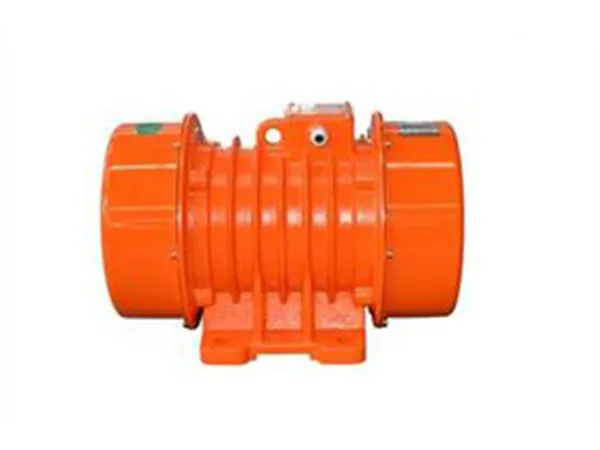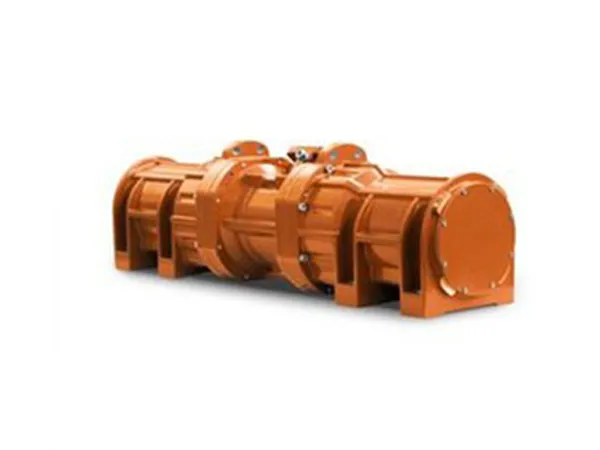
The VB series vibration motors are specialized electric motors designed to generate controlled vibrations for various industrial applications. These motors are known for their reliability, durability, and efficiency, making them suitable for integration into equipment such as vibrating screens, feeders, conveyors, compactors, and sieves.
VB series vibration motors are sold in more than 20 provinces, cities and autonomous regions in China, and exported to Europe, Africa, Japan and Southeast Asia. They have successively won the Silver Award of the National Spark Program Achievement Applicable Exhibition, the Provincial Quality Product Award, and the Provincial Science and Technology Progress Award.
Features
1. The excitation force and output are properly matched, and the body is light in weight and small in size.
2. Due to the use of stable rotation to produce vibration, low noise.
3. Fully enclosed structure, can work under dust conditions without explosion-proof requirements.
4. Long service life, bearing life up to 5000 hours for 2 poles and 10,000 hours for 4, 6, and 8 poles.
5. Only by adjusting the included angle of the eccentric block, the excitation force can be steplessly adjusted to meet the needs of various working conditions.
6. Multiple units can synthesize various vibration forms to meet various operating requirements.
7. Abundant models and complete specifications can meet the working needs of various types of vibration machinery.
The VB series vibration motor has a power of 0.12~25KW, 2, 4, 6, 8 poles, an exciting force of 2.5~300KN, and a total of 56 specifications.
Working Principles
Electric Excitation: VB series vibration motors operate based on electromagnetic excitation principles. When an electric current flows through the motor windings, it generates a magnetic field that interacts with the rotor, causing it to rotate.
Eccentric Weight: Each motor in the VB Series is equipped with an eccentric weight mounted on the rotor shaft. As the rotor rotates, the eccentric weight generates centrifugal force, leading to vibration.
Vibration Generation: The vibration produced by the eccentric weight is transmitted to the equipment or machinery connected to the motor, causing it to vibrate. The vibration parameters (intensity, frequency, and amplitude) can be adjusted to meet specific application needs.
Control: VB Series motors can be controlled manually or through automated systems such as variable frequency drives (VFDs) or programmable logic controllers (PLCs), offering precise control over vibration characteristics.
Applications
Material Handling: VB series vibration motors are commonly used in material handling equipment such as vibrating screens, feeders, and conveyors to facilitate the transportation, sorting, and processing of bulk materials.
Screening and Sizing: They find applications in vibrating sieves and screens for separating particles based on size, shape, or density in industries such as pharmaceuticals, chemicals, and food processing.
Compaction: VB motors are utilized in compactors and vibratory compacting equipment to densify soil, asphalt, concrete, and other materials in construction, road building, and landscaping projects.
Foundry and Metalworking: These motors are used in foundry shakeouts and metalworking equipment to remove sand, debris, and burrs from castings, forgings, and machined parts.
Testing and Calibration: They are employed in testing equipment, instruments, and calibration devices that require controlled vibrations for performance testing, analysis, and quality assurance purposes.

VB series vibration motors are used as the excitation source of various types of vibration machinery, such as vibrating feeders, vibrating conveyors, vibrating ore discharge machines, vibrating sand shakers, vibrating screens, and vibration anti-blocking devices for silos, etc., and are widely used Electricity, building materials, coal, mining, metallurgy, chemical industry, light industry, casting and other industries.
READ MORE
VBB series explosion-proof electric vibrating motors for applications in the oil & gas sector and wherever safety regulations explicitly require explosion proof certification, according to the international standards in force in various countries.
READ MORE
The VLBL series vibration motors are a specialized type of electric motors designed specifically for generating controlled vibrations in various industrial applications.
READ MORECopyright © 2023 Xinxiang Zongyuan Machinery Equipment Co., Ltd. | All Rights Reserved.